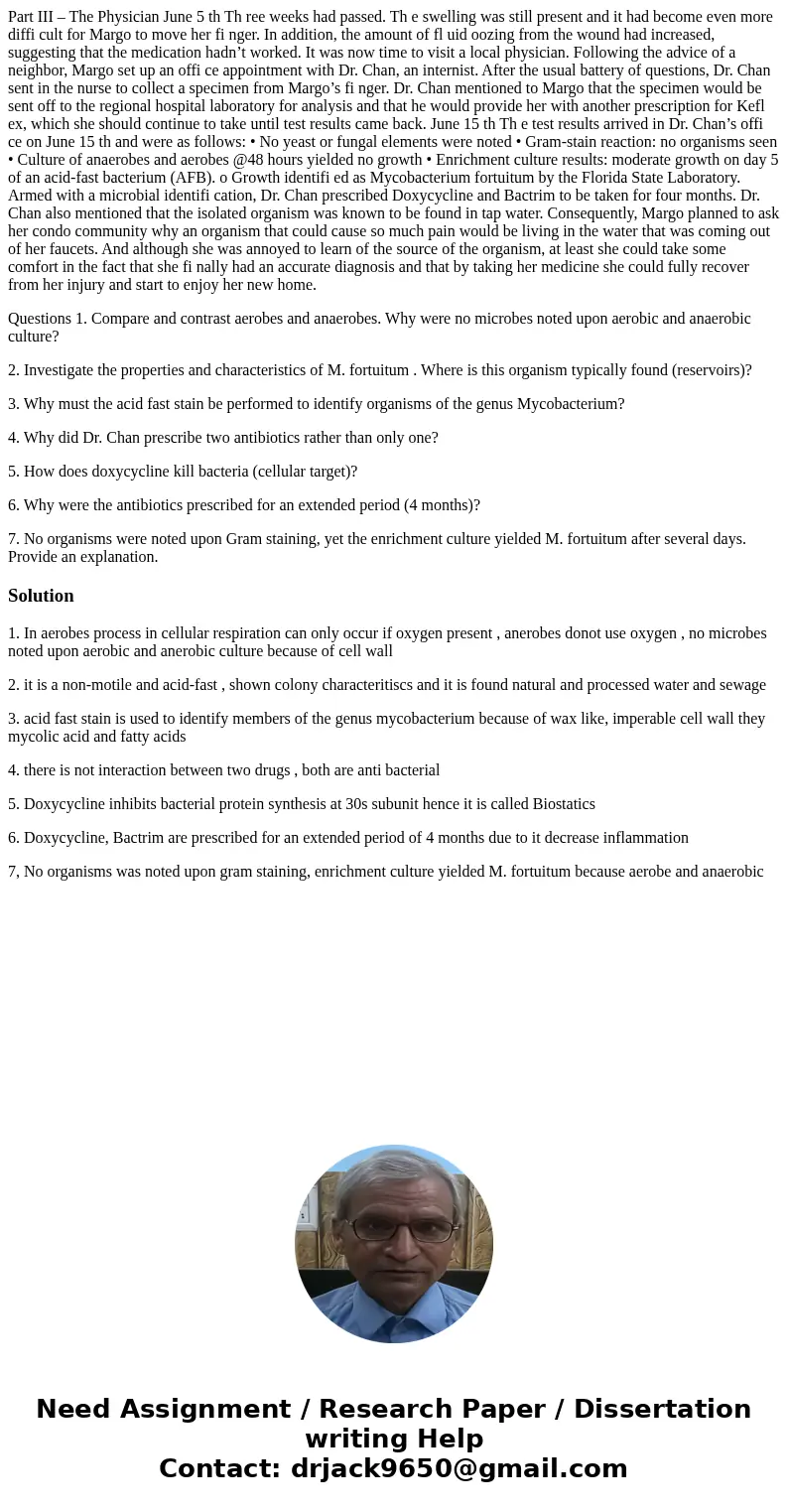Part III The Physician June 5 th Th ree weeks had passed Th
Part III – The Physician June 5 th Th ree weeks had passed. Th e swelling was still present and it had become even more diffi cult for Margo to move her fi nger. In addition, the amount of fl uid oozing from the wound had increased, suggesting that the medication hadn’t worked. It was now time to visit a local physician. Following the advice of a neighbor, Margo set up an offi ce appointment with Dr. Chan, an internist. After the usual battery of questions, Dr. Chan sent in the nurse to collect a specimen from Margo’s fi nger. Dr. Chan mentioned to Margo that the specimen would be sent off to the regional hospital laboratory for analysis and that he would provide her with another prescription for Kefl ex, which she should continue to take until test results came back. June 15 th Th e test results arrived in Dr. Chan’s offi ce on June 15 th and were as follows: • No yeast or fungal elements were noted • Gram-stain reaction: no organisms seen • Culture of anaerobes and aerobes @48 hours yielded no growth • Enrichment culture results: moderate growth on day 5 of an acid-fast bacterium (AFB). o Growth identifi ed as Mycobacterium fortuitum by the Florida State Laboratory. Armed with a microbial identifi cation, Dr. Chan prescribed Doxycycline and Bactrim to be taken for four months. Dr. Chan also mentioned that the isolated organism was known to be found in tap water. Consequently, Margo planned to ask her condo community why an organism that could cause so much pain would be living in the water that was coming out of her faucets. And although she was annoyed to learn of the source of the organism, at least she could take some comfort in the fact that she fi nally had an accurate diagnosis and that by taking her medicine she could fully recover from her injury and start to enjoy her new home.
Questions 1. Compare and contrast aerobes and anaerobes. Why were no microbes noted upon aerobic and anaerobic culture?
2. Investigate the properties and characteristics of M. fortuitum . Where is this organism typically found (reservoirs)?
3. Why must the acid fast stain be performed to identify organisms of the genus Mycobacterium?
4. Why did Dr. Chan prescribe two antibiotics rather than only one?
5. How does doxycycline kill bacteria (cellular target)?
6. Why were the antibiotics prescribed for an extended period (4 months)?
7. No organisms were noted upon Gram staining, yet the enrichment culture yielded M. fortuitum after several days. Provide an explanation.
Solution
1. In aerobes process in cellular respiration can only occur if oxygen present , anerobes donot use oxygen , no microbes noted upon aerobic and anerobic culture because of cell wall
2. it is a non-motile and acid-fast , shown colony characteritiscs and it is found natural and processed water and sewage
3. acid fast stain is used to identify members of the genus mycobacterium because of wax like, imperable cell wall they mycolic acid and fatty acids
4. there is not interaction between two drugs , both are anti bacterial
5. Doxycycline inhibits bacterial protein synthesis at 30s subunit hence it is called Biostatics
6. Doxycycline, Bactrim are prescribed for an extended period of 4 months due to it decrease inflammation
7, No organisms was noted upon gram staining, enrichment culture yielded M. fortuitum because aerobe and anaerobic

 Homework Sourse
Homework Sourse